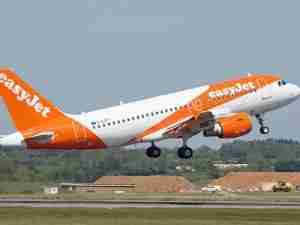Airline Profits Face Decline From Record as Oil Price Climbs
By: | Dec 08 2016 at 07:34 AM | Air Cargo
Global airline earnings are set to decline next year after reaching a record in 2016 as higher oil prices clip margins, according to the industry’s main trade group.
Net income is likely to total $29.8 billion worldwide in 2017, the International Air Transport Association said in a statement Thursday. That’s 16 percent lower than the $35.6 billion forecast for this year, a figure that itself represents a downward revision from the $39.4 billion estimated in June.
While airlines have been reaping record earnings following a slump in the price of crude, IATA reckons a barrel of oil will average $55 in 2017, up from $44.60 this year, lifting jet-fuel expenses to almost 19 percent of overall costs. Alexandre de Juniac, IATA’s new chief executive officer, said the profit slide amounts to a “very soft landing” for the sector.
“These three years are the best performance in the industry’s history,” De Juniac said at IATA’s annual media day in Geneva. At the same time, “risks are abundant—political, economic and security among them. And controlling costs is still a constant battle in our hyper-competitive industry.”
Though the higher oil price will squeeze earnings, airlines have improved their ability to “efficiently restructure and manage their business,” making the industry more resilient, De Juniac, formerly CEO of Air France-KLM Group, where he clashed with unions over cost cuts, said on Bloomberg Television.
IATA, which represents 265 carriers accounting for 83 percent of global air traffic, pared the earnings forecast for this year because of slowing global economic growth and a 2 percent increase in non-fuel costs. The new 2016 estimate, still an all-time high, suggests industry profit will be $300 million higher than in 2015, with a margin of 5.1 percent of sales, also a record.
Traffic Growth
Growth in passenger traffic is set to slow to 5.1 percent in 2017 from an anticipated 5.9 percent this year, IATA said. That’s less than the expected increase in capacity, so average seat-occupancy levels will slip below 80 percent. Even so, the industry group sees fares stabilizing as worldwide gross domestic product picks up.
Of greater concern, according to IATA, is an uneven distribution of earnings that suggests carriers in some regions are still far from sustainable.
Almost 61 percent of 2017’s net income will be concentrated in North America, with earnings of $18.1 billion down 11 percent versus 2016, IATA projects. European airlines, by contrast, may see profit slump 25 percent to $5.6 billion, depressed by “intense competition” and the threat of more terrorist attacks, while the Asia-Pacific figure is likely to decline 14 percent to $6.3 billion.
The U.S. have benefited from a head start in consolidation, curbing supply and bolstering prices, according to De Juniac, who succeeded Tony Tyler as IATA chief this summer. European carriers are catching up “but still have a long way to go,” especially since they generally face higher taxes and charges, he said.
Airlines in the Middle East and Latin America will remain barely profitable in 2017, posting collective earnings of $300 million and $200 million respectively, IATA said. Africa will continue to trail the rest of the world with a forecast $800 million loss, about the same as expected this year.










